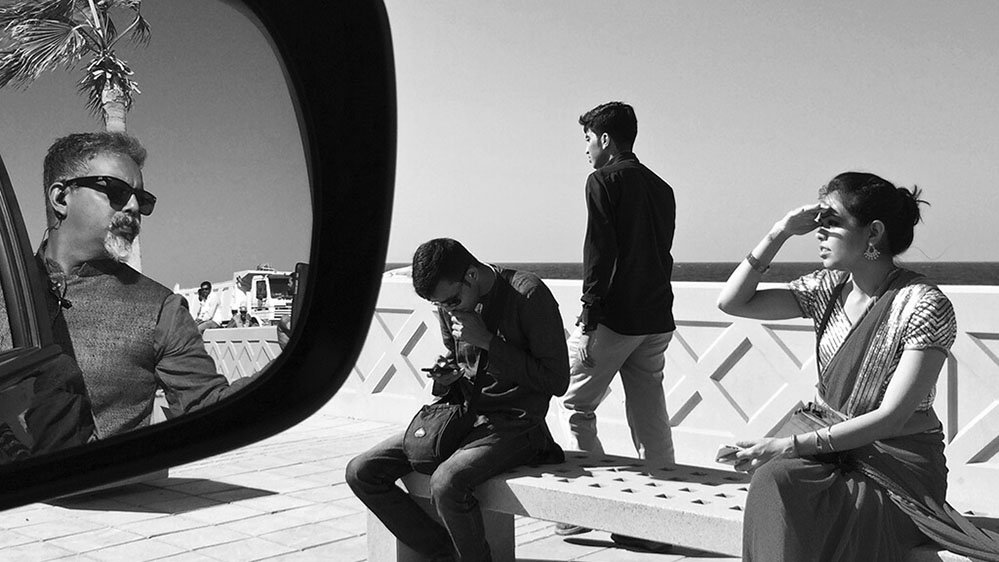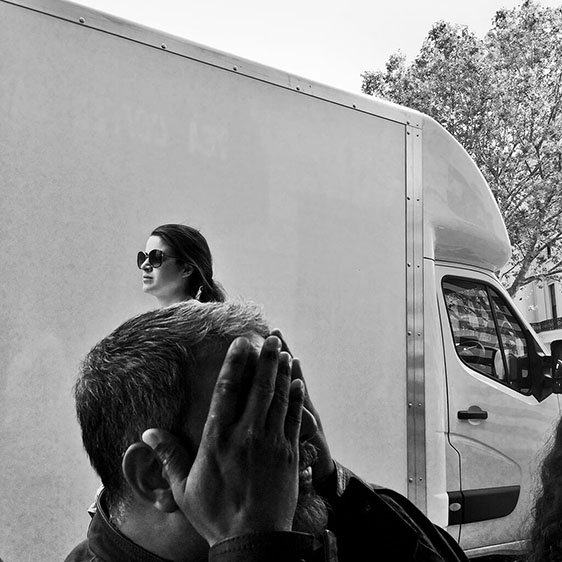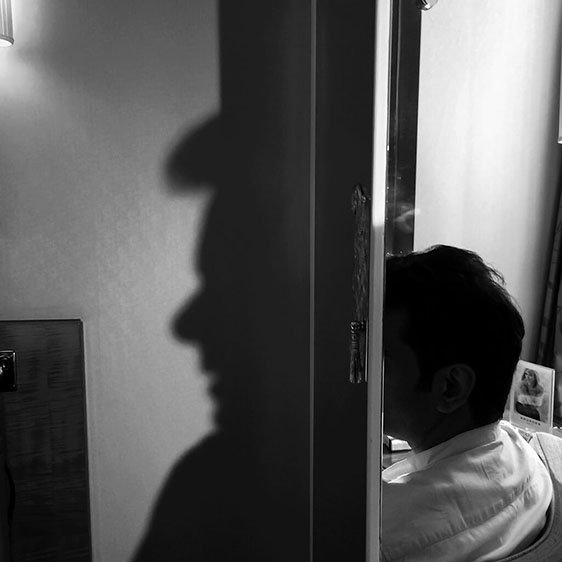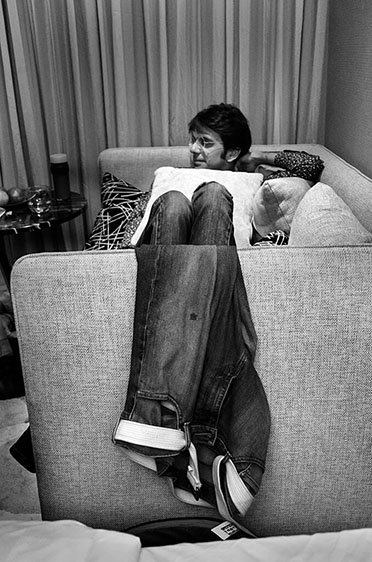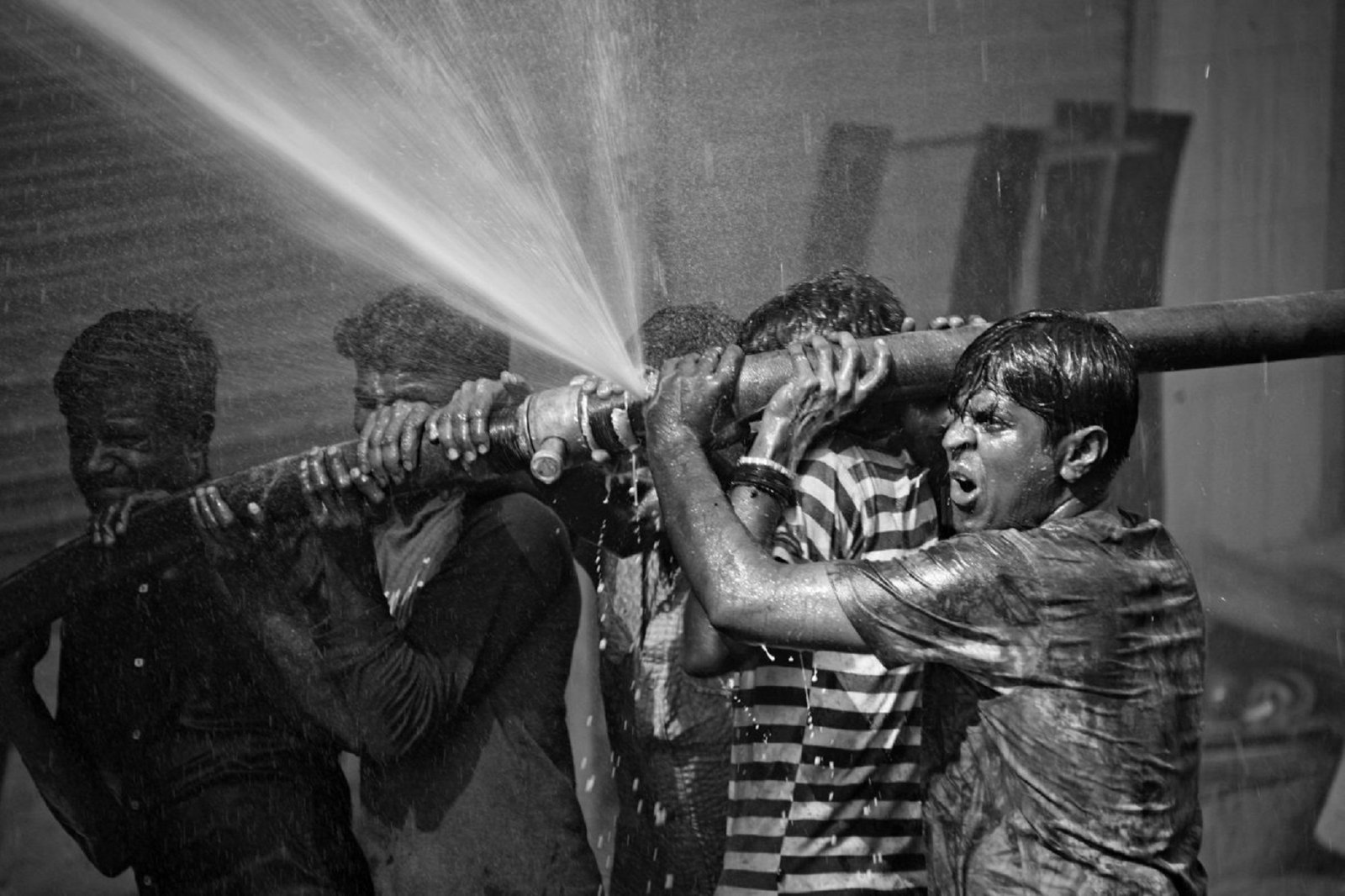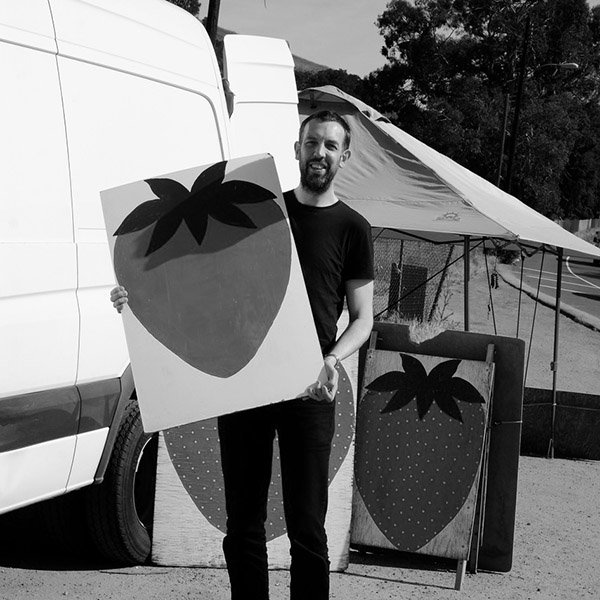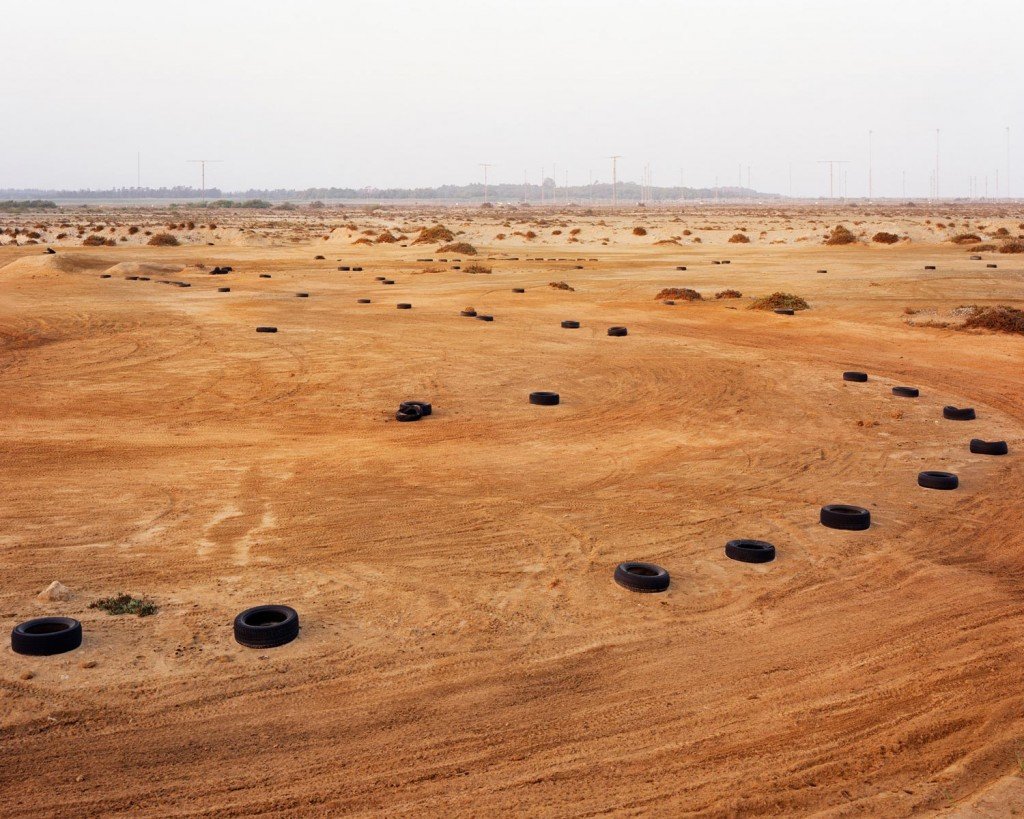India –
Emaho caught up with celebrated Indian Photographer Swapan Parekh who is widely acclaimed for having brought the documentary aesthetic to Indian advertising photography, his personal works remained rooted in the terrain of black-and-white photography, little of which has been seen in India.
Kishor Parekh, your father, was a pioneer photojournalist. What was his role in your becoming a photographer?
It was the untimely death of my father, the legendary photojournalist Kishor Parekh that threw me into this arena. I was 16 then, studying science and had never really picked up a camera. And like all young sons believed, their dads, their heroes, aren’t supposed to die. I did not even know how to mourn his sudden passing away like this. I remember going and opening his cupboard, burying my head in his clothes with the yearning to smell him one last time and take a pledge, that I want to be a photographer thereon. Till today I hear stories about how he revolutionised Indian reportage photography in the 1960’s; and though he and I are very different kind of photographers, there is so much I would have liked to share with him.
Maybe the only consolation is, this early abandonment perhaps helped me etch my own identity, growing outside the shadow of his colossal presence.

Ad based on the theme – Death of The Computer
You’re accredited for a unique style of adding a documentary aesthetic within your advertising work. Tell us a little about this style you developed.
Having studied documentary photography in New York in the 1980s, I came back and did a few news and documentary projects here in India. But soon I realised that shooting distressed India for a foreign audience was irritating me. Almost coincidently at this time my work was noticed by a certain art-director Prashant Godbole, who felt that this style of mine could be used in advertising work, as nobody else was doing this. We did our first campaign together, entirely the way I wanted to shoot it and on my editorial terms. It was instantly noticed. That started a life long bond between Prashant and me. He and others like the legendary ad-man Mohammad Khan gave me campaigns where I could do my thing by virtually conceiving, executing, processing my film, printing images on my terms, and finally using the image I chose ‘full frame’, without cropping. A condition which even though so far was unheard of in advertising, I insisted on and they respected. Basically this style was about ‘manufactured reality’. Here my documentary background helped me a lot. This style became my public domain in photography for many years. The work was noticed and awarded globally.

Ad for Killer Jeans
Manik : Is your advertising work like the famous ‘Life and Times of India’ your own brain child?
Once the broad copy of the campaign is conveyed to me, I would work towards creating images that felt immediate but yet were immaculately crafted. I look into every detail of casting, locations, props, and make production decisions in order to make the final images feel ‘real’. Many times I would actually sketch the images like a screenplay. I thrive on this fine line between visuals that are totally liberated from anything that usually is linked to inert ad pictures, and at the same time communicate the clients’ perspective too. My bliss in advertising was coming up with visual solutions, never in executing a pre-determined layout.

Ad – Life & Times of India
Manik : You’ve been on the World Press Award Jury thrice! What was the experience like?
Well needless to say seeing close to 1,00,000 images in a week, each year, was understandably overwhelming. It was actually peeking into the history of mankind for that year. Even though it’s backbreaking, tiring and extremely intense, just the awareness that the huge responsibility and honour sitting on the jurors’ chair brings in, keeps one vigilant and sharp every time. Being the youngest juror each year also had its plus’ and minus’s.
I think over the years there was a shift from just sensational images to more interpretive images. There seemed to be less emphasis on shocking the viewer with graphic shots, to pictures which were more peripheral of the event but equally poignant. I think this shift in the final awarded images may have irked the hardcore news photographers, but I think it did pave the way for a long term shift in favour of the thinking photographer. For instance, images from Iraq in 2004 were vastly different from those submitted in 2008. People were tired of seeing blood. I think the response was more weighted in favour of images that showed the emotional rather than the physical destruction of a situation.

Swapan’s 1st Prize Winner at World Press Photo Awards – 1994 (Latur Earthquake)
Manik : Looking at your very early documentary work, say stories on child marriage and the orphans of terrorists, one sees poignant stories told with artistic brilliance. How did you achieve that balance?
If someone is writing about a serious issue, would you fault the person if they have beautiful handwriting? Like I said the craft of photography and its pure ‘visuality’ matter most to me. I told those stories the way I knew how to. If they are perceived to be artistically brilliant then so be it. Here the balance you speak about is just a perception. I was there as a photographer. So if, my visuals, my forte, don’t engage the viewer then what’s my purpose? Those stories required a lot of time investment. In fact if I may make an impartial assessment then I daresay, because of their narrative style they eventually hit a different chord with the viewer. People had photographed child marriages before me, but I reckon, never at a micro level like this.
In fact, I feel in today’s times when photography is becoming ever so casual and flippant, the skill required of a well crafted photo-story is well worth reviving and given its due weightage.
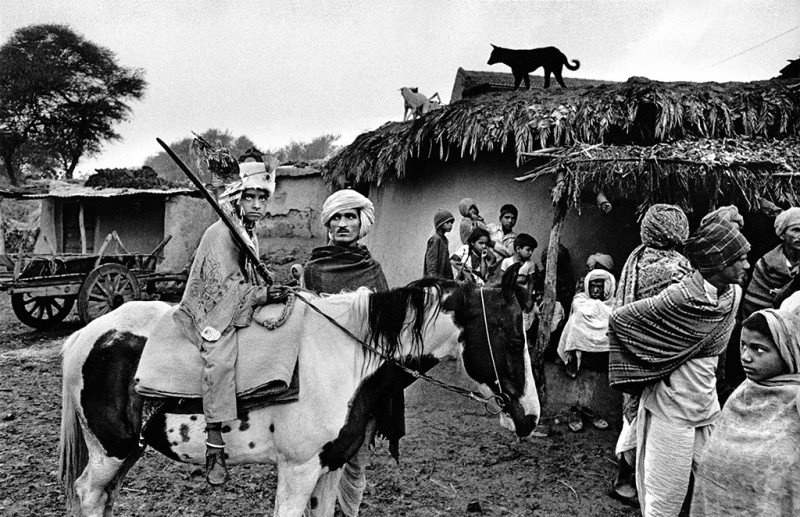
Photo Essay – Child Marriage
Manik : Your exhibition ‘Between Me & I’ captured snippets of your life; it turns very ordinary instances from your personal experiences into works of art. What made you decide on this project?
None of my personal works are predetermined ‘projects’. I don’t function that way. Each image is a singular encounter, as and when it presents itself to me and appeals to my visual sensibilities. Eventually the collective whole is probably cohesive and lends itself to being labelled ‘artistic’ because of a distinct, consistent and personally nurtured visual nomenclature. They are also visual configurations invariably punctuated with situational ordinariness. I find the mundane sexy. My photographs in fact are almost anti-photographs. For some they may seem just snapshots, but for the studied I hope the gravitas is there to decipher.
I did not even realise ‘Between Me & I’ had really started until I was two years into it and then I consciously started putting these tangential images into a folder. In some subtle way these images were about my ‘Identity’, without pretending to be so; because the situations and settings were from my everyday world. Albeit not in a, “hey look at the behind the scenes of my family, friends and work environment” kind of a way, but more in terms of the geography of the experiences. When ‘Between Me & I’ started, is something I could never pin point, nor will I ever be able to predict its finale. This body of work keeps realigning itself over the years. It’s a great parking slot for my drive to shoot pictures as and when I encounter something that turns me on, without having to fictitiously reason that they have a larger purpose.
 From the ongoing series ‘Between Me & I’
From the ongoing series ‘Between Me & I’
Manik : A lot of the images that are part of ‘Between Me and I’ seem very spontaneous. Did you compose your images with the idea in mind?
Not a lot of the images, in fact all the images are spontaneous responses. My photography is entirely reflexive. I shoot when there is an overwhelming need to capture the visual arrangement that has arrested my sensibilities at that instant. Since the response is spontaneous, I guess that filters through the compositions too.
The reason for ‘Between Me & I’ being in colour is derivative from my always being a control freak. Let me explain…For the last approximately 30 years since I started photography, I have always processed my own film and printed my own B&W images. The darkroom was a huge part of my identity as a photographer. I never got the desired print quality from anybody else. So I felt more ‘complete’ as a photographer while shooting B&W. In colour there was always the issue of the film going to the lab and then, based on the characteristics of the film emulsion, one got a version of what one had seen while shooting. I considered colour far more difficult as it was devoid of the intrinsic seductiveness of B&W. I hugely admired legends like Raghubir Singh and William Eggleston who were master craftsman working in colour and dye transfer prints. Colour really came into my world only around the time that I started using digital, as I could finally fine-tune my pictures in a ‘daylight darkroom’. I guess because now I had control over the outcome of my colour images and they felt closer representations of what I had seen. I reckon ‘Between Me & I’ was a direct consequence of this new found control.

From the ongoing series ‘Between Me & I’
Manik : What do you mean by “photographic reflex”?
It’s an ‘Instant Evaluation’ based on years of seeing and experiencing while shooting. That instant when the inside and outside align and actually make one want to press the shutter. Your current state of knowledge and cumulative memory-bank, largely decides this split second capture of a visual configuration. It’s what leads to your distinct visual brew. It’s how you shoot, what you shoot. And it’s not only about what you include, but also what you deliberately choose to exclude in your final moment of release. A heightened and evaluative “photographic reflex” could probably best be construed as the antithesis of the much-abused ‘delete’ button.

From the ongoing series ‘Between Me & I’
Manik : What do you think is the present and future of photography in India as compared to the rest of the world?
Honestly, in India I encounter too much of mediocre imagery which I credit largely to the ignorance towards the history of the medium. There seems to be no yardstick for good imagery. Very few are ready to invest in the years and in their vision. Everyone seems to be in a hurry and shooting in a bubble, oblivious of the historical path of photography. Too many people are having a casual fling with photography without realising that, by choosing to pick up a camera, they by default owe something to the heritage of this great medium. There seems to be no sanctity in being a photographer anymore.
I personally feel photography as a medium is going through anxiety fractures. If people don’t slow down and evaluate, I’m afraid one will keep encountering a great number of photographs, but too few great ‘photographers’.
 From the ongoing series ‘Between Me & I’
From the ongoing series ‘Between Me & I’
Manik : Platforms like photo festivals, magazines, workshops among others are catching up fast in Asia. Do you think Asian photographers are today getting as much exposure?
One can’t get away from the fact that photography was invented in the West. There has always been a much more educated awareness about the medium whether from practitioners, galleries, critics or the audience. With the Internet and other platforms, that knowledge can be shared and may trick us into believing that the gap between the West and East is closing, but in my opinion there still exists a huge gap in the volume of images of calibre.
Hopefully this bridges with time as more and more Asian photographers practice the medium armed with photographic education, both historical and contemporary.

From the ongoing series ‘Between Me & I’
Manik : You’ve been labelled the face of contemporary Indian photography. What defines this genre?
Well that’s probably a label some over zealous journalist may have come up with in an article. I have worthy contemporaries who equally share this huge responsibility. I guess people have sat up and noticed because historically only a handful of Indian photographers have actually invested in a way of seeing and developing their own visual glossary. Indian photography has classically been topical; about reportage or photo-stories. I guess for me, even though I formally studied photojournalism, I realised very soon that this wasn’t enough. I did not want to change the world through my images; I was turned on predominantly by the pure ‘visuality’ of an image. And that is what has always driven me to take a picture, regardless of the genre.
I guess any contemporary photographer of calibre, regardless of boundaries, is armed with a sense of the history of the medium which helps him or her make informed choices while shooting. So whether it’s India or anywhere else, it would be arrogant to shoot without being aware of what the history of the medium was. There is then a huge risk of rehashing familiar imagery.
 Photo Essay – Baba & the Orphans of Terrorists
Photo Essay – Baba & the Orphans of Terrorists
Manik : …and the continuing journey of your personal work in Black & White? How is that going?
This work has always been very dear to me. Maybe that’s why I am holding it close to me and haven’t yet shown it on a larger platform. Like I mentioned, processing my own film, making contact sheets and then printing the final images was something that defined me as a photographer. And, as is the case in all my personal work, these images too are ‘encounters with the ordinary’. Right through the last 3 decades I have made these black & white prints for myself and put them in this small black box. Whether it eventually turns out to be a Pandora’s box or not, only time will tell.

From the ongoing ‘Personal Black & White’ Series
Manik : How far do you think your work represents the story of the lives of the Indian people?
My work is not about India or Indian people at all. In fact the Who?, What? , When?, Where?, are totally irrelevant to my work. The images could be shot anywhere, and in fact a large number are shot abroad too. And that is why I largely choose not to title my images. My engagement with photography is based purely on visual musings; sociological inferences have never been the intent.

From the ongoing ‘Personal Black & White’ Series
Manik : Do you support young photographers who use online platforms to get feedback for the work they are doing?
On a communicative front the Internet has undeniably revolutionised the sharing of photography. However, for me, the tangibility of a photograph is what I have always treasured in photography. The ability to hold a print and see how its been crafted and admire the image both for content and craftsmanship. I hate shoddiness in photography. Unfortunately, that is exactly what online photography camouflages. So while it may be great to get feedback for what one is doing, a real photographer should lay equal stress on how the work looks physically. Otherwise they can never be called complete photographers in my opinion.
Well there is no photography-police that can say what is good and what is not. But I still enjoy seeing a show or a book much, much more than an online viewing for reasons mentioned above. A well crafted show separates the men from the boys instantly. I think even though they serve a limiting purpose, exhibitions may selectively check the increasing randomness that is plaguing photography currently.
Who knows the answer may lie somewhere between online social-forum driven photography and physical galleries.

From the ongoing ‘Personal Back & White’ Series
Manik : What are you currently working on?
I find that line very scary; especially now at a time when photography, as I knew it, is over. I confess, more than images I am currently working on somehow realigning my belief in photography, which seems to have desiccated to some degree. The struggle for me just now is between adherence to convention, vis-à-vis the new relations that has made photography into a medium of mass consumption and frivolity.
I will continue to shoot a picture when it presents itself to me, but in today’s world, where one billion pictures are uploaded everyday, it will gasp to exist.

From the ongoing ‘Personal Black & White’ Series
Photography Interviewed by Manik Katyal and Marukh Budhraja
Photographed by Swapan Parekh
